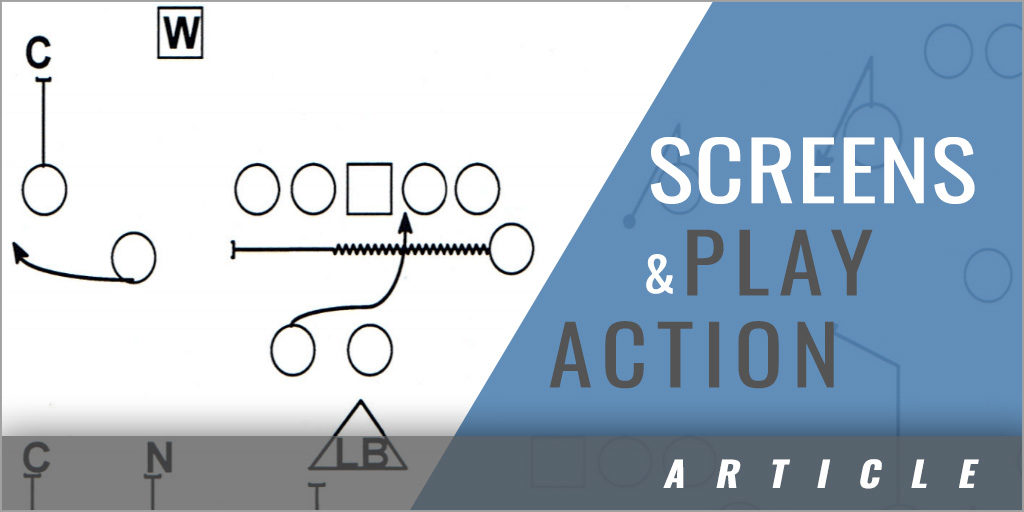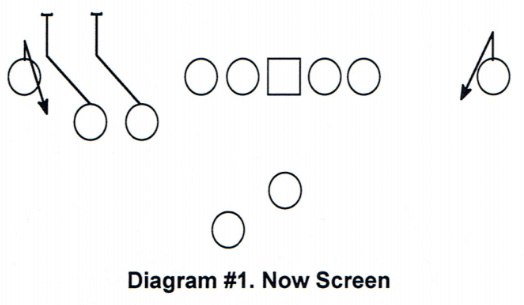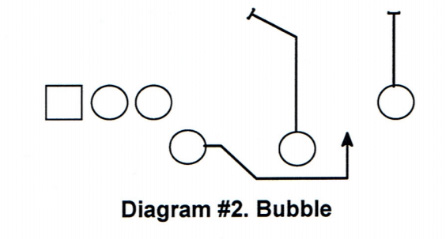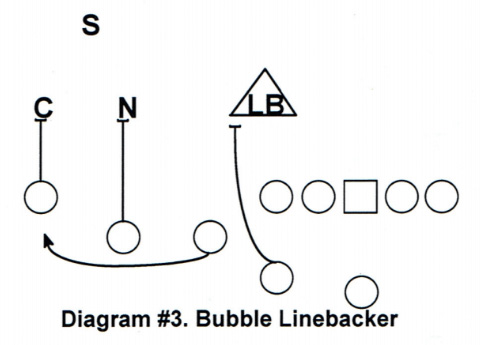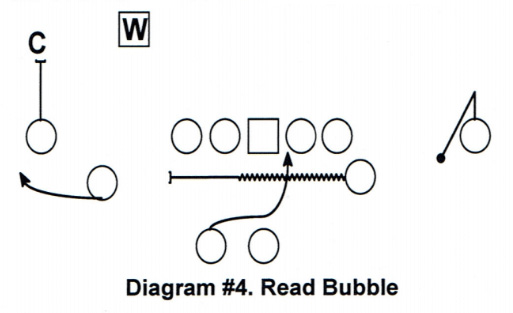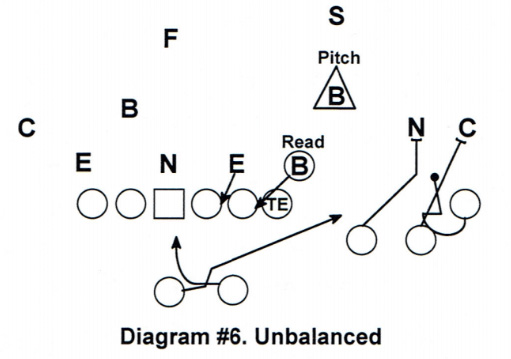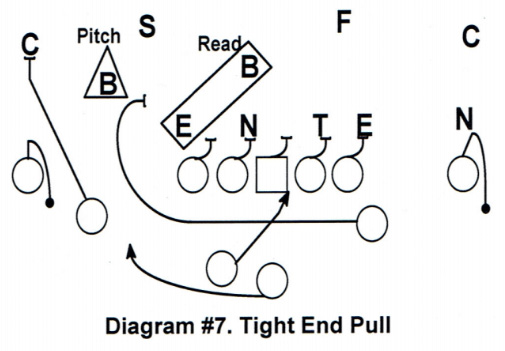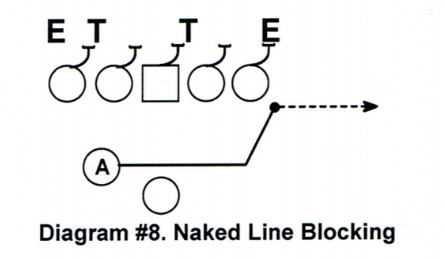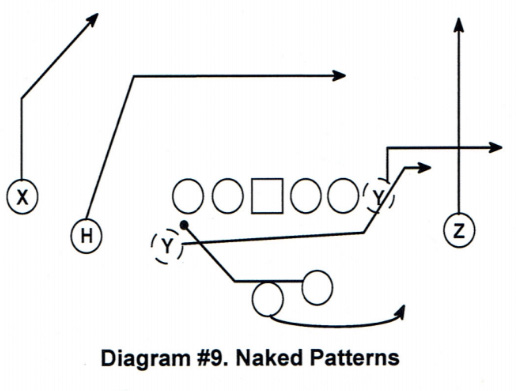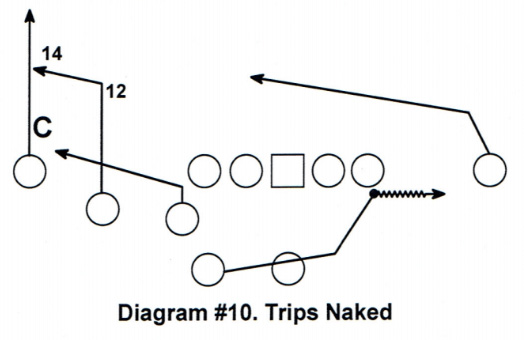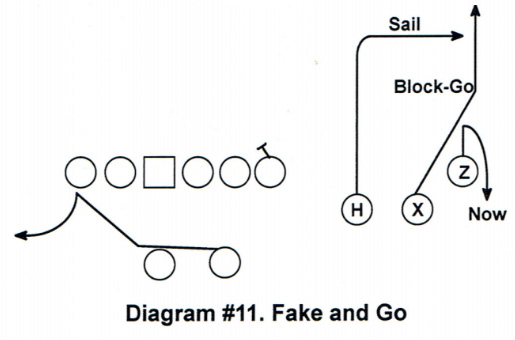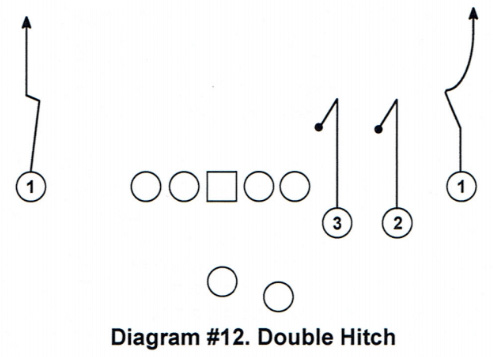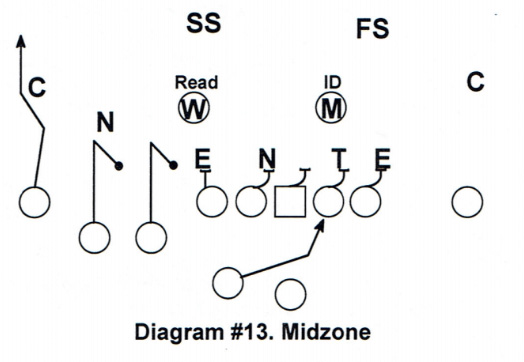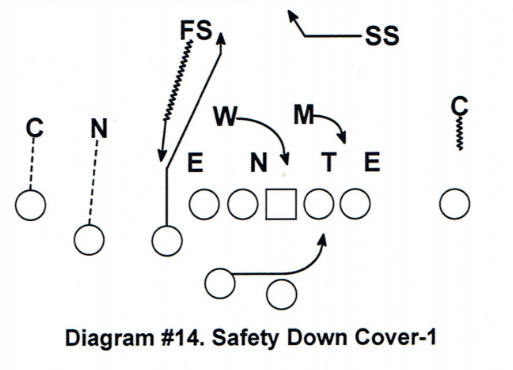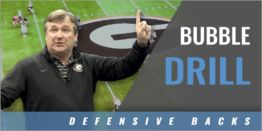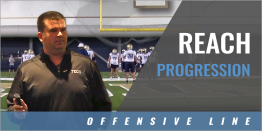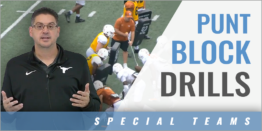|
By: Matt Wells - Utah State University Originally Published in: 2018 Nike Coach of the Year Clinic Manual - by Earl Browning Provided by: Nike Coach of the Year Thank you for that introduction. That was very nice. I really appreciate it. I drew the 8:00 time slot. There are about four times as many people that I thought would attend this session. I know why I got the 8:00 time slot because I am the youngest head coach at a non-power five school. I did not think there was going to be anyone here. But I told the director, if 10 people show up, I am going to give them all I got. My grandpa used to say, "There ain't no snooze button for a dog that wants to eat." I assume that everyone in here wants to eat. I sincerely tip my hat to you for coming in here this morning. Not to listen to me, but to sit around and talk some ball. I got in the elevator this morning on the way down here there was a guy on the elevator. We struck up a conversation. He knew I was affiliated with Utah State and he wanted to talk to the head coach about selling him something. I told him who I was, and he was shocked. That is how I started off my morning. I had only one cup of coffee and I am going to give you everything I have. I want to share something that Ken Niumatalolo, the head coach at Navy, said to me when I was a very young coach there. I was very impressed with him and everything he said I hung onto it. He told me that every time I went to. hear someone speak, take notes. I know there are different ways for guys to learn. Some of them are auditory and some are visual. I get that. Some coaches are walk through coaches. We all are a little different. He told me to write stuff down and commit it to memory. You may listen to someone speak for an hour. In that hour you may have heard one thing that you did not know. You may find one thing that fits into what you do. The other 59 minutes you are going to validate what you are doing. Everything that you are doing, he talked about. There is power in knowing you are doing things the right way. When I meet other coaches, I am constantly asking questions about how they handle things that go on within their programs. When they tell me it kind of makes me puff my chest out. We are on the right path at Utah State and I am on the right path as a head coach. I say a lot of the same things that experienced coaches say, but just a little different. If you hear something that sounds familiar write it down. Time is money. If you spend an hour in here and learn one new thing, it is time well spent. The stuff I am going to show you works. I am going to show you some good stuff and some bad stuff because football is not a perfect game. Thanks for letting me speak and I am going to talk about our play action passing game. I want to start out by telling you who we are at Utah State. We are a spread option football team that uses pace as one of our weapons. We play 11-personnel about 85-90 percent of the time. We use a tight end but on some occasions, we get into a 10-personnel grouping. I spent my first five years coaching at the Naval Academy when Kenny Niumatalolo was the offensive coordinator. I learned about the option from him. At Utah State we are not going to run the triple option, midline, or belly option. However, we are going to use some of the principles that govern how that option works. We are coming out of the shotgun and are going to run the zone read and the options that come off that game. We run the play action pass off the zone read and it is still an option-based offense. The biggest thing we have done is add a tremendous amount of pace to it. That is new for me in terms of my career. We are multiple formations and personnel. We run motions, shifts, trade the tight end, and get to the perfect run box. Pace sometimes prevent us from doing all those things. That is kind of our background and a lot of the plays I am going to show you will show up in our game tapes. We run the spread to run the football. It does not matter what league you play in, to win games you have to run the ball. If we do not run the ball well in November, we do not win games at Utah State. When we have had success in November it is because we can run the ball. With the weather, a passing based offense is not so good. The way we do that is a lot of option elements and tight ends off the ball. With the tight end off the ball, we are almost in a two back offense. It equates to a 20-personnel group. I am not going to talk about the running game today. I am going to talk about the play action passing that comes off the running game. We throw the ball horizontally and vertically. We want to stretch the defense horizontally. We do that with drop back passing but we are not a huge drop back passing team. However, we use it. We get into the vertical game off all the play action passing as well as the drop back pass. The offense we run bases off screens, naked, RPO's, and run action. We do not bootleg any more with a pulling guard. There is nothing wrong with the bootleg, but we made a philosophical decision to stay with the naked play. The reason is we get more reps and it is simpler. We do pull the guard sometimes, but it is all on the run action. We use the RPO system. I am starting to see that in high school tape and the NFL is using some of the principles. I will show you one pass from that series and how we coach the offensive linemen in relationship to the RPO scheme. Bubble or Now Screen:
My offensive line coach has bought into this scheme. Using the bubble screen gets defenders out of the box. This is going to force defenses to defend the field horizontally when we have a run play called. We can get into a pass play from the run in a bunch of different ways. We have the screen built into the offense out of the 2 X 2, 3 X 1, and to the single receiver side. That is the first way we can get into the horizontal stretch. We can use quarterback signals to the wide receivers. That is based on defenders numbers and leverage. When I talk about the "Now" screen, that is a one-step pass to the perimeter. If the defensive back gives the receiver an extremely open look, we throw the now screen immediately. We can throw the bubble screen to the number-1 receiver or the number-2 receiver. There are different ways to do that. Some of the plays come off pre-snap reads and some are post-snap reads. This offense wants to get the ball into the best and most explosive athlete in space. With your best players playing on the perimeter, they can sometimes be taken away by defensive adjustments. If you run a slower tempo offense it is easier to highlight one of your best players. If you run a pace offense and the good receiver is a right side only receiver, the defense knows where he is at all times. It does not matter if he is on the ball or off, he is on the right side. We often do that because you can run a quicker pace. He does not have to move from one side to the other. He does not cross the formation unless you go unbalanced. However, when you are playing with pace, he is aligning quickly any way. This is a way to get that receiver the ball. You can do it with a tag or it may be built into the scheme. In a 3 X 1 set we can run the now screen to the number-1 receiver to the formation side. (Diagram #1)
The number-1 receiver takes one step down field. He shuffles back for a half step. The number-2 receiver pushes to the half way point between the corner and the number-1 receiver. From there he is going to block the MDM (Most Dangerous Man) head up to inside. The number-3 receiver does the same thing. He pushes to the half way point over the number-2 receiver. The only thing that changes that is a defensive back playing press coverage on the number-2 receiver. We tell the number-2 receiver if the defender is in a press position or inside three yards, he is going to lock on and block that defender. If the defender bails out, he continues and blocks his assignment. If he has to latch onto the defender, the number-3 receiver moves up and takes on his blocking assignment. To the single receiver side we have a pre-snap read to tell us what to do with him. The quarterback is going to look and decide "yes or no" as to the alignment of the defensive back. At times we can get back to the receiver in a post snap read but not often. The bubble screen is run to the three-receiver side of a trips formation. (Diagram #2) The number-1 receiver is going to block the MDM from head up to inside. That generally is the corner or safety. The number-2 receiver blocks the overhang defender. We used to tell him head up to inside. We have defined the rule to say touching him to inside. That means he blocks a defender head-up, inside, or outside on him. If the overhang defender is aligned on the outside tip of the number-2 receiver, he has him.
The number-3 receiver is the bubble screen receiver. He wants to go for width in his pattern. The quarterback has to make up his mind whether the linebacker can get into the screen. (Diagram #3) With the running back aligned to the three-receiver side, the linebacker does not walk out on the trips set. The quarterback looks at his alignment and must decide whether he thinks the linebacker can get to the bubble receiver. We are not worried about the safety on the play. He will be left unblocked. If he makes the tackle, we will have no less than a four yard gain.
The most common mistake made by the receivers is to jump to the outside tip of the defender. If he does that he gives up his inside hip. The number-1 and 2 receivers want to cover up the defender and work for a reach position. If he jumps to the outside, he lets the defender run under his block. If the corner should bail deep and the safety rolled down, the number-1 receiver blocks the most dangerous man on the third level. To the single receiver, the quarterback either throws it or he does not. It is yes or no. He gives the corner 6-9 yards as being able to cover the single receiver. This situation is a KYP (know your personnel). He has to know our receiver and the corner. There are some corners that can give a 9 yard cushion and still cover the back on the now screen. The quarterback makes that decision with knowledge about who the corner is. His decision is "yes or no." The blocker on the perimeter wants to cover the defender up instead of working perfect edges on the outside of the defender. We describe the technique as "show no color." That means the receiver is to get on his body so that no color of his jersey can be seen from behind the receiver. Even if the blocker is on the wrong hip, he wants to show no color. In a post-snap read, the quarterback reads the over-hang linebacker. (Diagram #4)
If the over-hang commits to the box, the quarterback is going to throw the bubble. The number-1 receiver blocks the MDM at the third level. It is either the corner or safety. If everything is normal, the receiver blocks the corner and the safety is unblocked. The slot receiver has to make at least four yards before the safety can react and get up for the tackle. The quarterback reads off the over-hang linebacker. If he believes the linebacker cannot make the play on the bubble, he throws the ball. The safety is no concern. He is unblocked. He can make the tackle but not for less than four yards. I do not like receivers cutting defensive backs. We do not cut unless the corner sprint sup to the line of scrimmage. If we cut, the defender must go down. If he does not, that is a minus in the receiver's grade. If we have an inside zone called, the quarterback reads the backside defensive end. (Diagram #5) If the end closed to the inside on the running back, the quarterback pulls the ball and runs the option to the outside. He has to locate the pitch key. He is either going to run the ball or pitch it.
The number-2 receiver comes off the ball at an angle to the outside and blocks the MDM. The number-1 receiver takes a drop and stays right there. He has to stay in phase with the quarterback and is now the pitch back for the option. It will be a throw from the quarterback. If he is into the boundary, the drop step will be bigger. He is close to the sideline and wants to stay in phase with the quarterback. That drop is in the gray area. We have to work it in practice again and again to get the timing right on the throw. The longer the quarterback goes, the wider the number-1 receiver has to stay. The number-2 receiver is blocking for the perimeter receiver and not the running quarterback. We can go unbalanced with four receivers to the trips side of the formation. (Diagram #6) The tight end is ineligible and is blocking the B-gap. The number-2 receiver goes immediately to the corner because he is in within three yards of the number-1 receiver. The number-3 receiver uses his midpoint angle to the outside and up on the defender over the number-2 receiver.
If the defender is in a press coverage on the number-1 receiver we still run the now screen. The number-2 receiver comes immediately down the line to block the press corner. Since there is tight coverage on the number-1 receiver, he does not use the regular step down the field and shuffle back. He takes his step down field and curls around the number-2 receiver coming out to block the corner. It is like a mini tunnel screen. If the number-1 receiver does not get the ball immediately, he knows the quarterback is running the option. He keeps his width and his position behind the line of scrimmage. The quarterback is reading the pitch key and throws the ball to the number-1 receiver. We tell the receiver to stay in phase and behind the quarterback. That slows him down, however, he is never behind the quarterback. The ball is a forward pass and not a pitch. We never tell the receiver that. The next set is a 2 X 2 set with the tight end off the line of scrimmage and slotted outside the tackle. (Diagram #7) If there is no defender outside the offensive tackle, the quarterback has an area read. The defensive end aligns in a 4-technique head up the offensive tackle. The quarterback does not know which defender that is the read. He uses and area read to decide what to do. We run the inside zone with the tight end coming under the line of scrimmage. He is going around the tackle and blocks the first shirt to showing from the inside. The quarterback finds the pitch key and runs the option. If the pitch key crashes off the edge, the tight end blocks him. He is blocking the over-hang defender to the first inside threat. The number-1 receiver gets in phase with the quarterback and waits for the throw.
When the number-1 receiver does not get the now screen, he turns and starts to shuffle the outside. He is almost running a baby bubble pattern. He wants to stay wide and give the quarterback a target. The bubble screen is a hard pass to throw. The receiver pushes off his inside foot and works for width, not depth. He cannot take any false steps as he gets into the bubble. The quarterback tries to put the ball on the receiver's face mask. It is a hard throw. In addition, it is hard to get all the receivers to run the pattern the same way. Naked:
The naked blocking is inside zone blocking. If we are running the naked to the left we are zone blocking right. (Diagram #8) The tailback comes over the mesh, takes a hard three steps, and keeps his hands in the mesh.
He sets up in the C-gap and blocks anything chasing from the edge. If nothing comes he bounces back to the outside. We have a throwback that can take advantage of that in the red zone. The backside guard and tackle, cannot get in a hurry. They cannot allow any pressure to come from the backside. They cannot allow more than one defender for the quarterback to deal with. They have to slow down on the backside of naked. They must stop any kind of radical movement to the backside. There is always a pattern in the flat that the quarterback can use as a hot throw on one-man pressure. We can bring the tight end from a number of places. He is going to end up in the flat to the naked side. (Diagram #9) If he is aligned as a normal tight end, he is blocking for a count of two plus seconds. His count is thousand-1, thousand-2, I am out. He runs a two yard deep flat pattern. He wants to make sure he crosses the flat defenders face. If he comes from the backside, we want it to look like a split zone kick out on the defensive end. He fakes the block and heads to his two yard flat pattern. If the tight end gets in too big a hurry he turns the C-gap defender loose on the quarterback.
The Z-receiver runs a take-off, or 15 yard come back. He must take an outside release as he goes down field. That pattern changes as the year goes on. The H-receiver runs a crossing pattern, he can go over the top or under the linebacker to his side, however, he has to be 10 yards over the quarterback as he runs the naked. If he gets man-coverage, he has to stair his pattern across the field. The X-receiver runs a chase post. We will not get to this pattern unless it is a scramble by the quarterback. If we run the naked into the trips set, we run a sail concept. (Diagram #10) The tight end pattern does not change regardless where he comes from. The H-receiver runs a sail route. He takes an outside release and breaks at 12 yards to the outside. He wants to gain depth to 14 yards at the sidelines. The X-receiver has a mandatory outside release and runs the take off.
The first receiver to the backside has the climb-over cross. He has to be over the quarterback at 10 yards coming from the backside. The fake by the running back and quarterback is the same. I will show you one more, which comes off the now screen fake. (Diagram #11) We use the unbalanced set with the tight end covered up.
The X-receiver runs his now screen footwork. The H-receiver runs the sail concept. The Z-receiver runs a fake block and go. This is the sucker play. When the corner wants to get involved, we run pass him. I want to get into the RPO's before I run out of time. We have some philosophy about them. RPO:
The running back takes three lateral steps, puts his foot in the ground, and reads the onside tackles block. He does not have to stick his foot in the ground after three, but he cannot do it before three steps. The one play we use and the first install is called a hitch concept. Some people call the hitch a stick pattern. (Diagram #12) It is a double hitch for the numbers-2 and 3 receivers. The outside receiver takes a mandatory outside release and runs a go pattern.
The blocking for this play is split. The front side from the center over is blocking a Midzone play. The backside is blocking a man blocking scheme. We are going to block the Midzone play to the right of the center. (Diagram #13) The backside guard is blocking two different techniques depending on where the defense aligns. If there is a backside shade on the center or a defender in the gap, he is blocking for the Midzone play or the running back. If the backside guard has a 2i-technique or greater, he is blocking for the quarterback on the RPO. The backside tackle is the lock man on the 5-technique defender.
The backside guard wants to block the backside of the defender because he is blocking for the quarterback. The backside tackle is on an island. He wants to keep his hips and weight back so he can keep the 5-technique covered up. He has to stay engaged on the defender and at the same time try to keep the defenders hands down for the RPO throw. We are going to identify a defender as the read defender. If he runs with the running back we pull the ball and throw off the second defender in the trips set. If we get man-coverage in the secondary with three men over three receivers, it becomes a run/run read for the quarterback. That means the quarterback is going to hand the ball to the running back or run it himself. RPO's are not good against pressure penetrating teams or teams that play cover-1. (Diagram #14) On this play the defense is going to roll the safety down and play man coverage on the trips receivers. That means the Will linebacker is an unblocked defender if we hand the ball off. This gives the defense a three-over¬three to the trips side. Rather than force the ball into a bad place we will hand the ball off and make the defense tackle the back.
We can change the pattern of the number-3 receiver. Instead of running the hitch, he runs a seam pattern past the rolled down safety. The will linebacker is running with the back and vacates the area the tight end runs into. The quarterback delivers the ball quickly. Hopefully there was one thing that was a little different that you can use. My hat is off to you for coaching this great game. Thanks for the influence you are in these young men's lives wherever you coach or at what level. Again, let me tell you thank you for coming out. |
